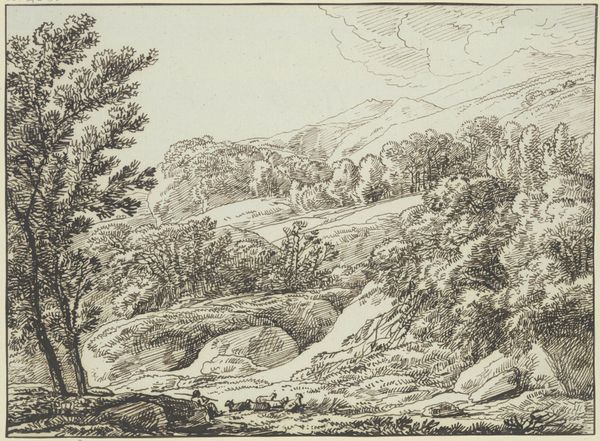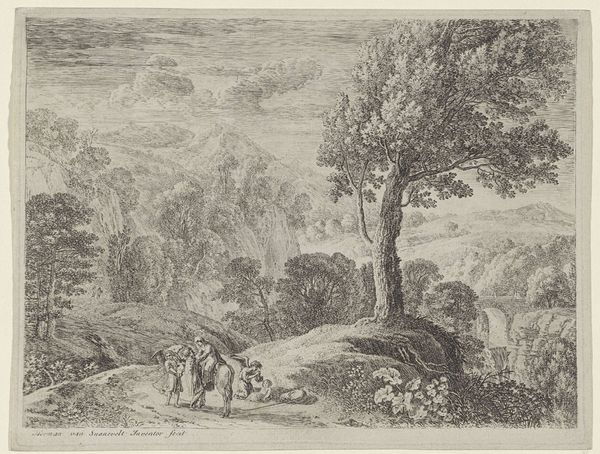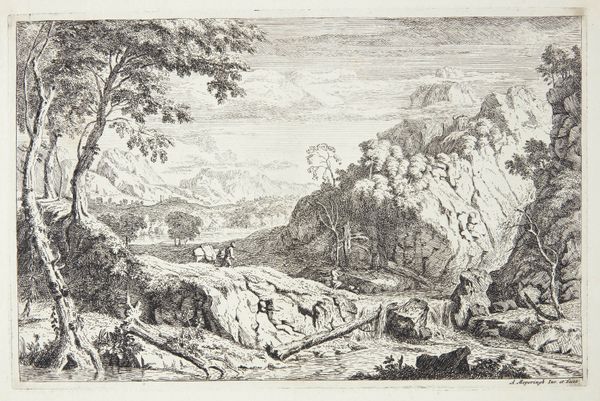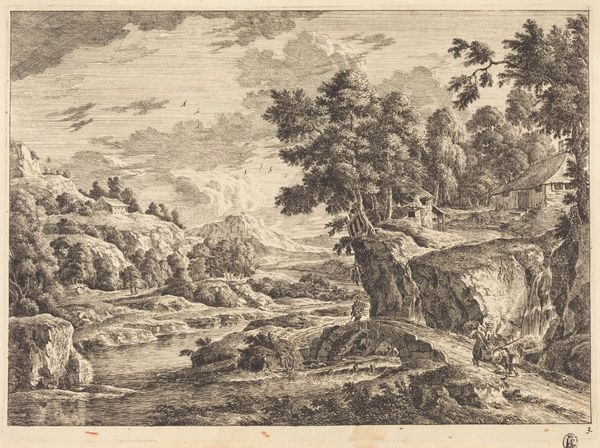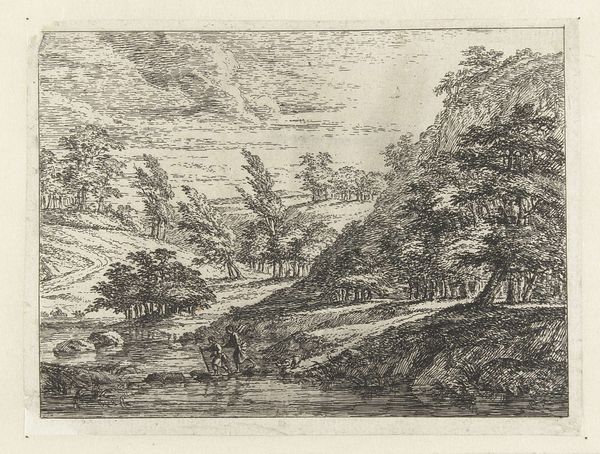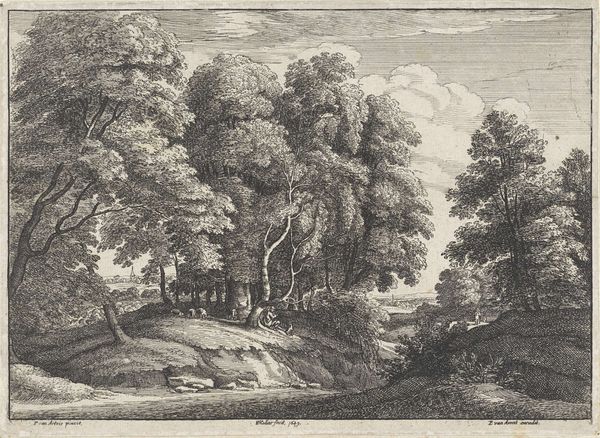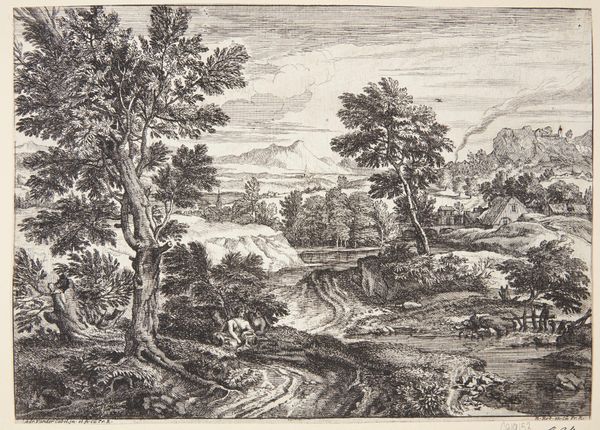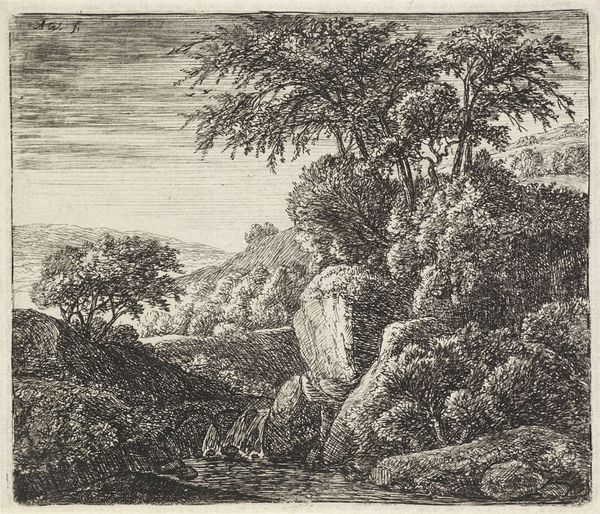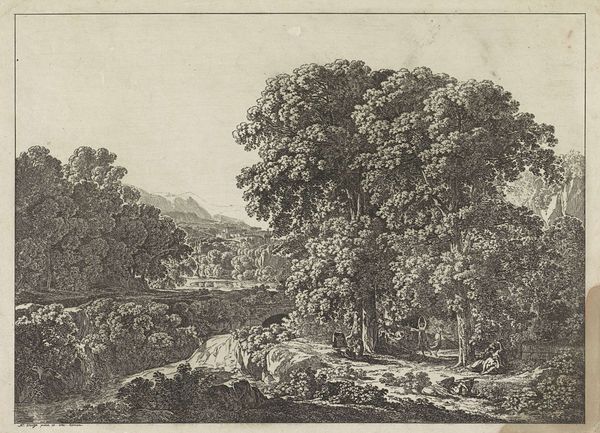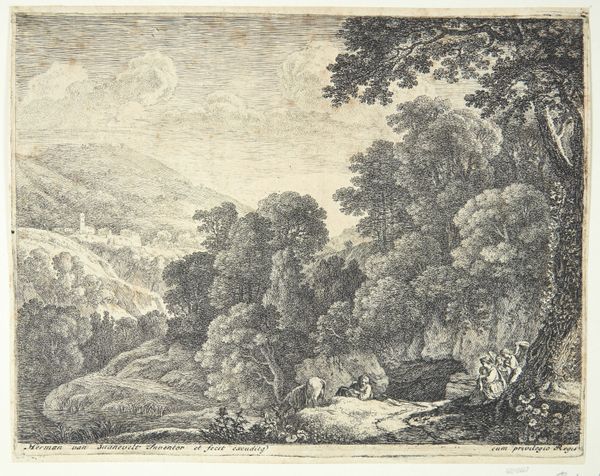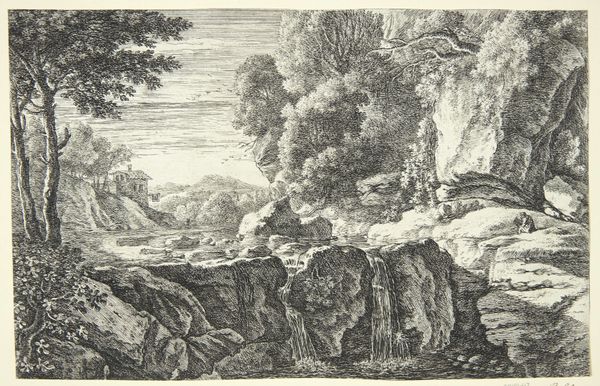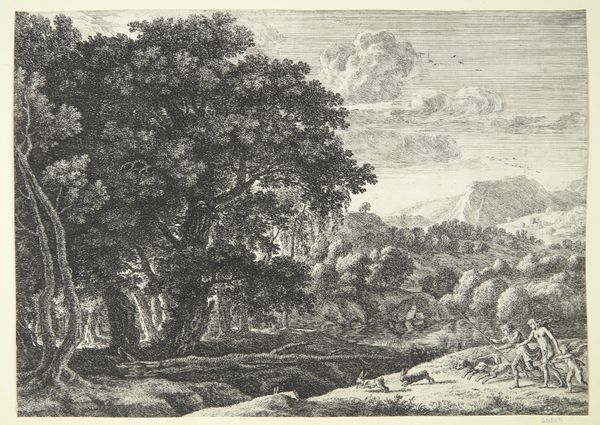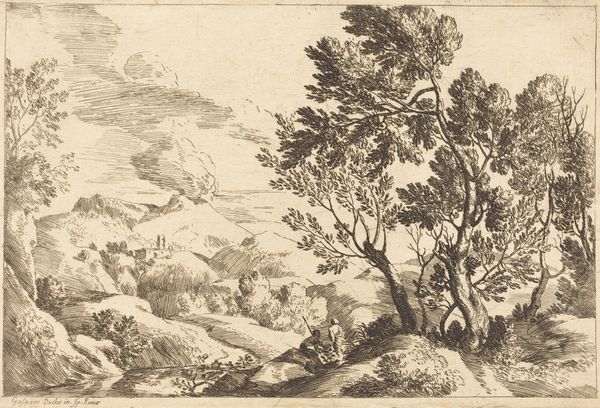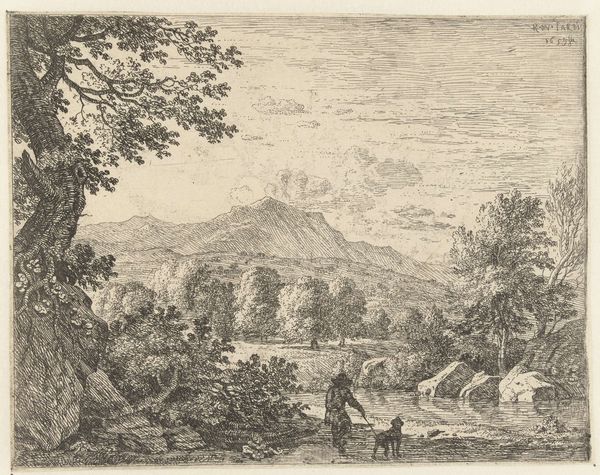
drawing, print, etching
#
drawing
#
baroque
# print
#
etching
#
landscape
#
etching
Dimensions: height 153 mm, width 204 mm
Copyright: Rijks Museum: Open Domain
Editor: This etching, "Man Drenkt Ezel in Rivier," dating roughly from 1633 to 1679, attributed to an anonymous artist, presents a captivating landscape. The scene, although pastoral, has a somewhat unsettling quality, doesn't it? I'm especially intrigued by the stark contrast between the heavily shaded foreground and the brighter background. How do you interpret this work from a formalist perspective? Curator: Focusing on purely visual elements, observe how the artist manipulates line and tone to create a sense of depth and perspective. Notice the strategic use of hatching and cross-hatching to model forms, particularly the dense foliage and the figure of the man. Editor: Yes, the density of the lines really does give it that sense of depth, and makes you focus on it, while everything around it blurs away... Curator: Precisely. Now, consider the composition as a whole. How does the artist's arrangement of elements guide your eye through the pictorial space? Think about how the placement of the man and the donkey anchor the scene. The artist deliberately employs diagonal lines, leading the eye from the lower left to the upper right, thereby structuring the visual experience. Is the texture primarily physical or implied, and where are those elements used? Editor: It is quite subtle, but I noticed that rough, almost chaotic line work implies the rugged texture of the landscape. The trees aren't particularly 'tree-like,' it seems, nor realistic! More like a wall of dense foliage... It almost flattens the image out again! Curator: The materiality becomes as important as the picture. In Baroque art the flattening could create symbolic space through an implied sense of enclosure. Consider the artist's control of tone which creates this effect, guiding you into the depth of the work and then keeping you in it. It asks what our relationship is to that visual tension? Editor: Thank you; considering the line work, tone, texture, and formal tension opens up so many avenues for further analysis. This piece seems far less straightforward than I initially thought.
Comments
No comments
Be the first to comment and join the conversation on the ultimate creative platform.
